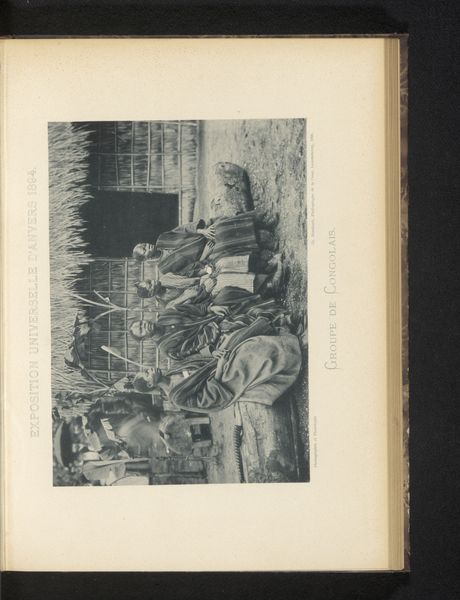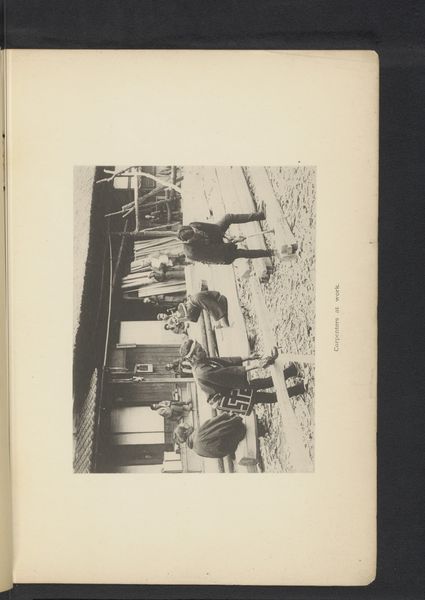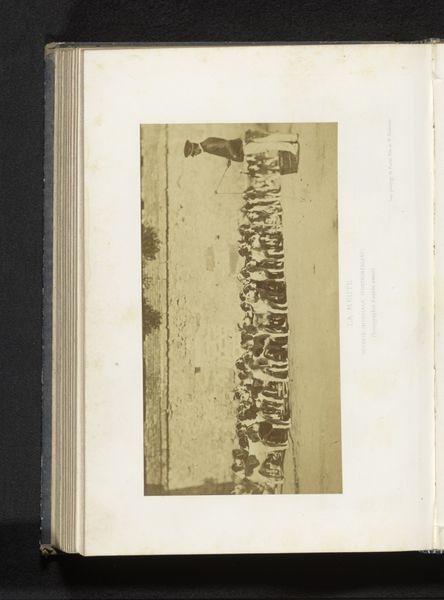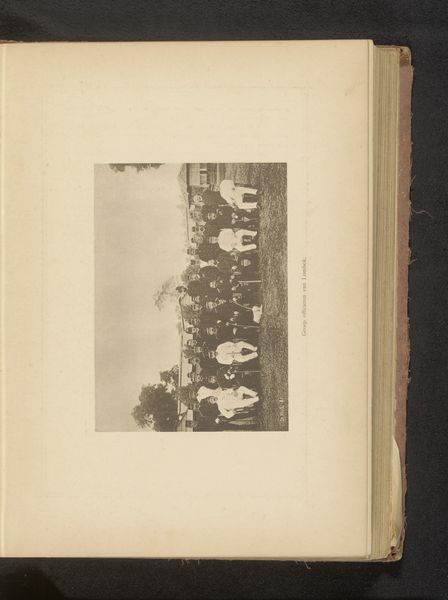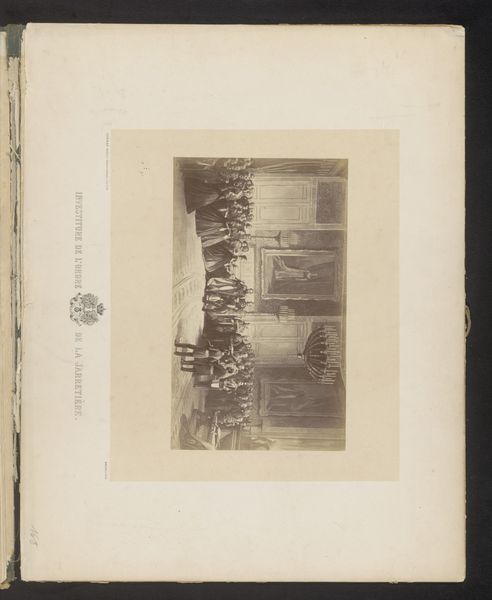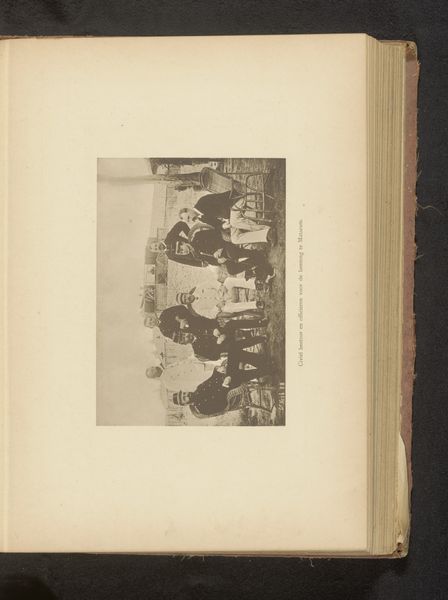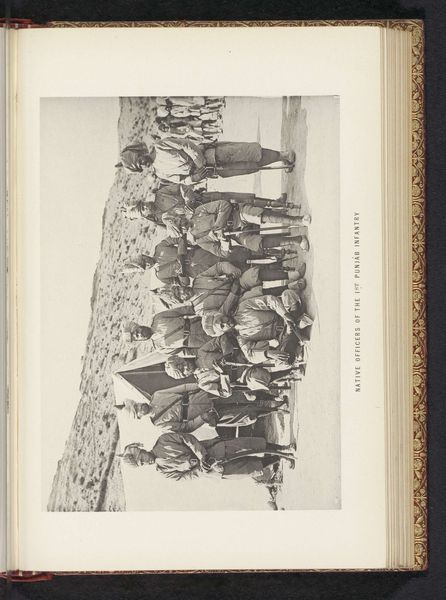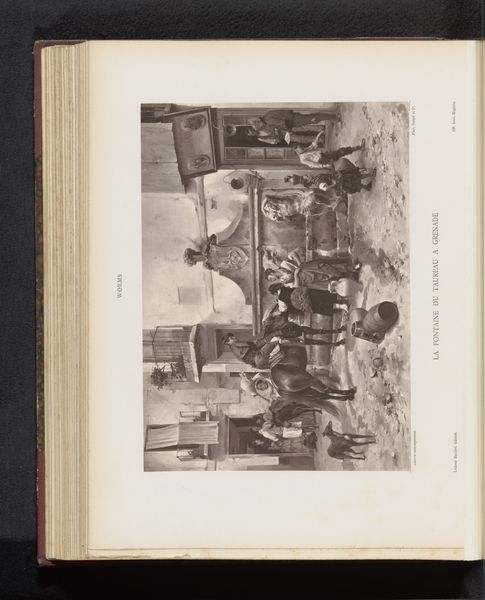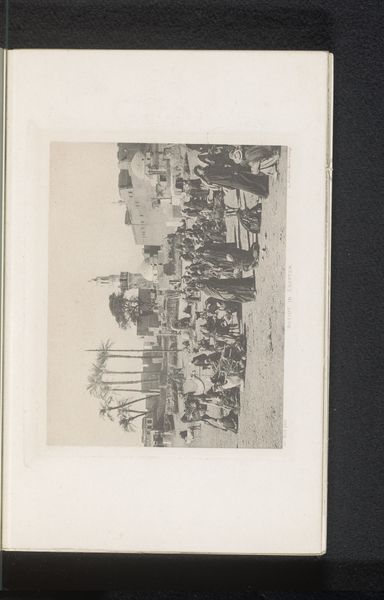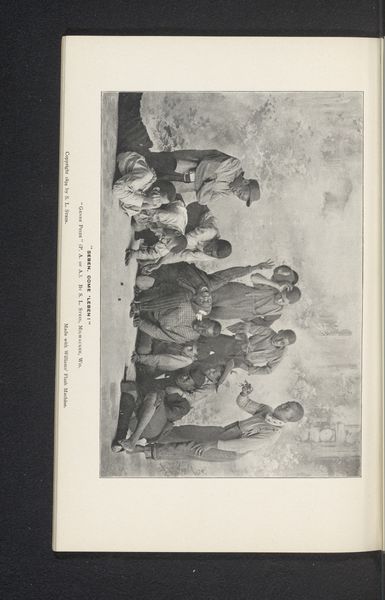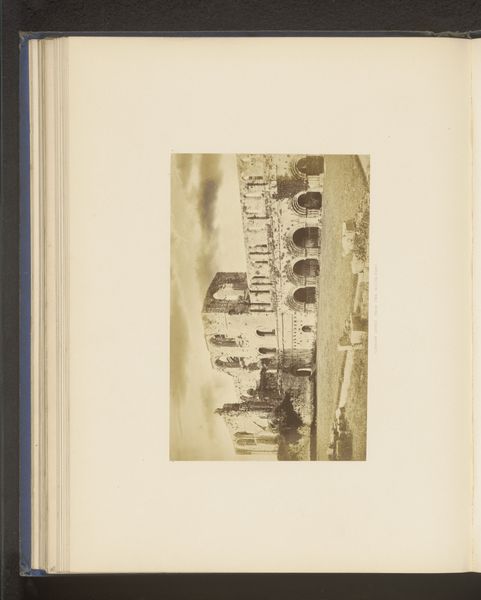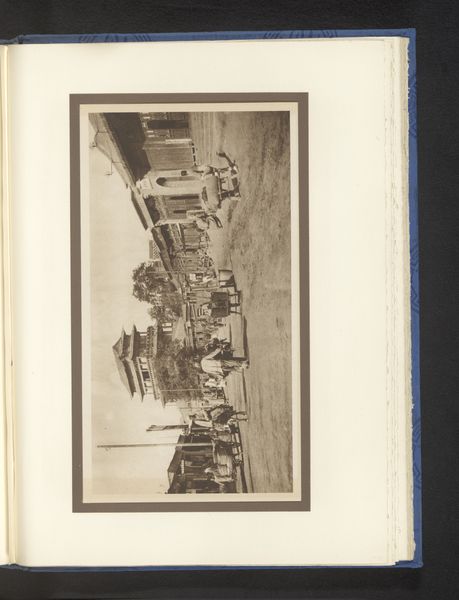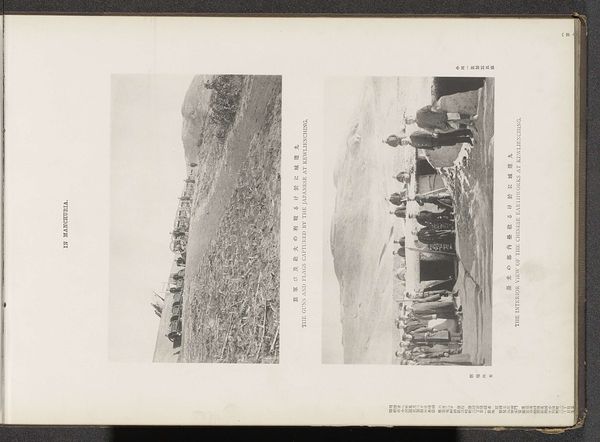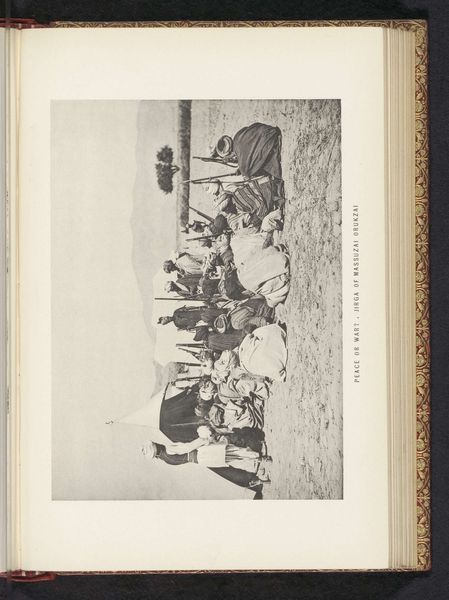
Vijf smeden in een nagebouwd Congolees dorp op de Wereldtentoonstelling van Antwerpen in 1894 1894
0:00
0:00
print, photography, albumen-print
#
portrait
#
african-art
# print
#
photography
#
orientalism
#
genre-painting
#
albumen-print
Dimensions: height 152 mm, width 216 mm
Copyright: Rijks Museum: Open Domain
Editor: Here we have "Five Smiths in a Reconstructed Congolese Village at the Antwerp World Fair in 1894," a photograph by Charles Bernhoeft, specifically an albumen print. The scene feels simultaneously staged and deeply ethnographic. What strikes you when you look at this piece? Curator: For me, the power lies in understanding the means of production and its context. These weren't simply "Congolese" smiths. They were laborers transported and displayed, their craft transformed into a spectacle for Western consumption. The photograph itself is a material artifact of this colonial encounter, mediating how viewers understood Congolese labor. Editor: So, you're focusing on the labor involved, both of the smiths and the photographer? Curator: Precisely. The very act of recreating a “Congolese village” for the fair highlights the objectification of an entire culture, turning lived experience into a commodity for the Western gaze. Bernhoeft, through his photographic practice, becomes complicit in this transaction, his materials and methods integral to its problematic nature. It also obscures indigenous modes of production through its very "reconstruction." Editor: That’s a very different way of considering ethnographic photographs. So it's less about authenticity and more about the artificiality of the construction? Curator: Exactly. Think about the wood, metal, fabric involved; all become props in a performance designed for a specific audience. And consider what's missing: the actual agency and lived realities of these smiths beyond their roles as exhibited workers. It provokes the question of who truly benefits from the labor depicted and how. Editor: This makes me see the image not just as a historical document, but a complex negotiation of power, materials and labour. Thanks, this gives me a lot to consider. Curator: Indeed. The material conditions surrounding the photograph itself are key to unpacking its meaning.
Comments
No comments
Be the first to comment and join the conversation on the ultimate creative platform.
